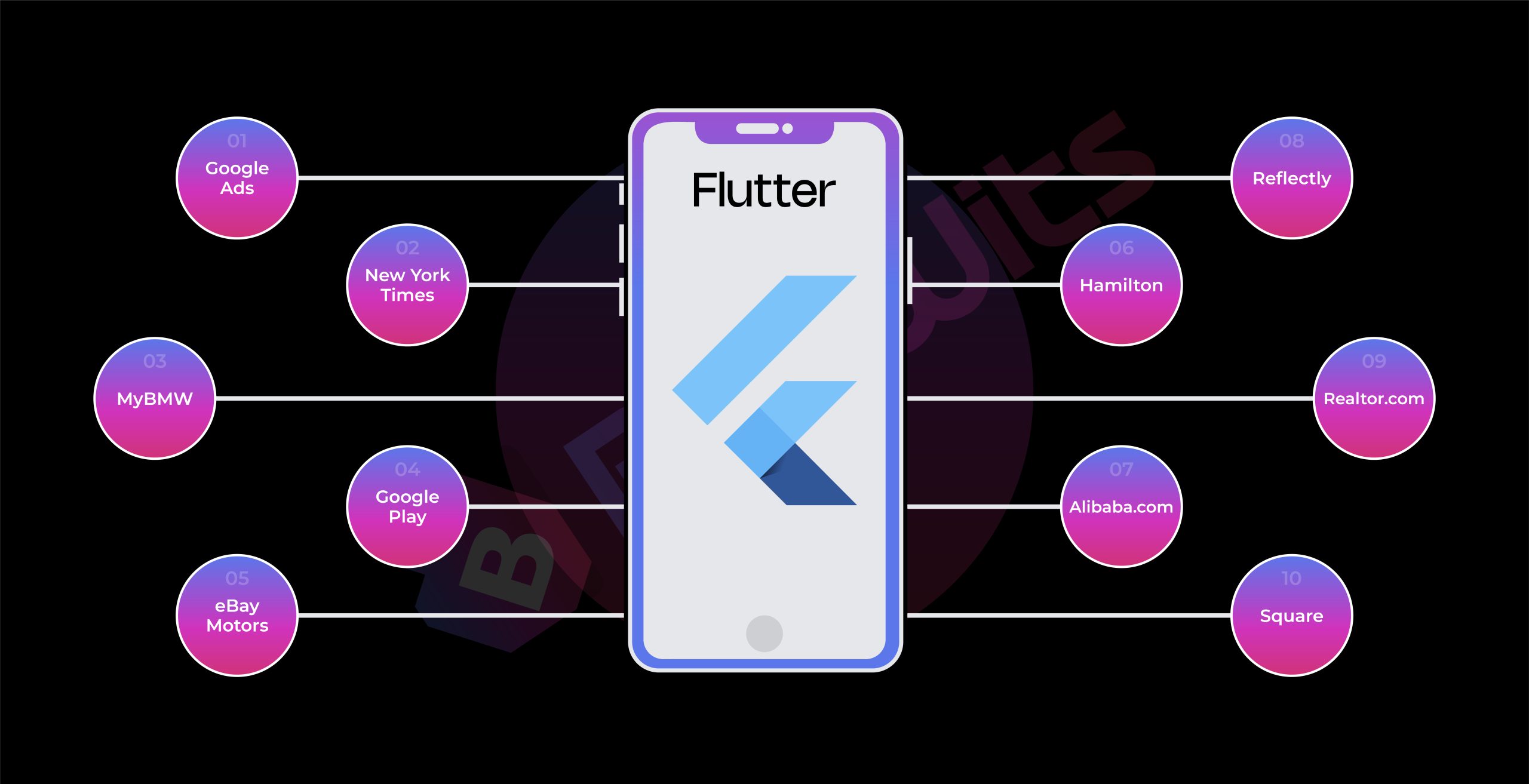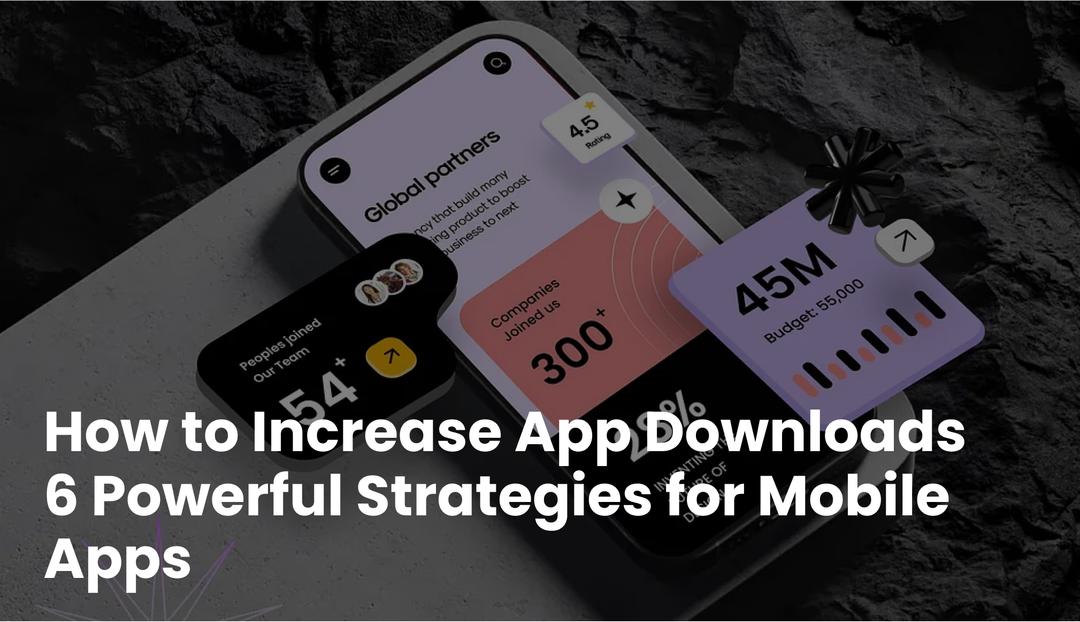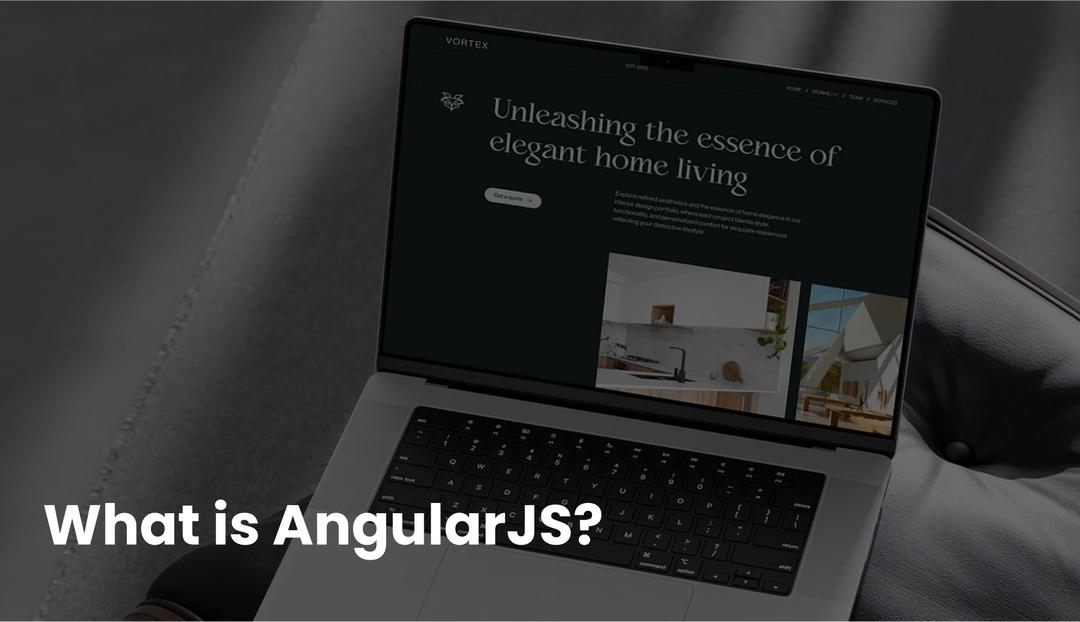Flutter, on the other hand, is Google’s response to building for both iOS and Android in one go. Using a single codebase, Flutter can help you save time and reach a broader audience, especially if you’re launching on both platforms. And with hot reload, Flutter makes design tweaks feel instant, which is a lifesaver when you’re refining every little detail.
In this guide, we’ll look at what each framework does best, when one might be the smarter choice over the other, and what real developers have to say about working with both. You’ll walk away with a clearer sense of which one fits your app’s needs. Let’s get started!
Need a Quick Recommendation?
We’ll Help You Choose The Right Framework.
Hire Expert
What is Swift?

Swift is Apple’s programming language for building iOS, macOS, watchOS, vision OS and tvOS applications.
Developed to replace Objective-C, Swift is specifically designed to get the most out of Apple’s hardware and software.
If your project is purely focused on iOS app development, Swift is a go-to, offering direct access to Apple’s native features and allowing you to optimize performance.
Swift works seamlessly with Apple’s frameworks like UIKit and SwiftUI, giving you precise control over both design and function, which makes it ideal for high-performance iOS apps.
What is Flutter?

Flutter is one of today’s popular app development frameworks developed by Google, and it lets you create apps for multiple platforms using a single codebase.
For those looking into cross-platform app development, Flutter is a top choice. Its foundation in the Dart programming language and widget-based structure means you can customize design elements extensively while only coding once.
Plus, Flutter’s “hot reload” feature allows you to see your changes instantly, saving time when refining your app’s look and feel.
For projects that need to span iOS and Android, Flutter can be the answer. However, if you’re deciding between Flutter and other cross-platform options, check out our detailed comparison of React Native and Flutter to explore which might suit your project even better.
Comparison Between Swift and Flutter for iOS – Quick Summary
Here’s a brief Flutter vs. Swift comparison table summarizing the differences between both frameworks based on what we will discuss further.
| Parameter |
Flutter |
Swift |
| Open-Source |
Yes |
Yes |
| Cross-Platform Compatibility |
Yes |
No |
| Development Time |
Fast |
Slower in comparison |
| UI Paradigm Used |
Declarative |
Declarative |
| Reloading |
Hot Reloading for real-time updates |
Real-time changes possible |
| Application Size |
Larger |
More flexible in size |
| Language Type |
Static |
Static |
| Multi-Threading |
Async/Await + Futures, Streams |
Combine |
| Type of Programming Language |
Object-Oriented |
Object-Oriented with Functional Elements |
| Learning Curve |
Easier due to Dart |
Easier with detailed documentation |
| UI Builders |
Flutter UI Toolkit |
SwiftUI |
| Accessibility |
Supports external accessibility tools |
In-built accessibility support for iOS |
| Testing |
In-built testing support |
Native testing tools like XCTest |
| IDE Used |
Visual Studio Code, Android Studio, IntelliJ |
Xcode |
| Integration |
Nevercode |
Jenkins |
Want a Full Comparison?
We’ll Help You Understand Every Detail.
Hire Expert
Comparison Between Swift and Flutter for iOS – In-Depth Exploration
When choosing between Flutter vs. Swift for iOS development, weighing each framework’s strengths can help you make a well-informed decision. Every detail counts, from creating mobile app wireframes to finalizing performance features.
Here’s how Flutter and Swift stack up on key areas that matter for most app projects.
Performance
Performance is a significant factor, especially for apps that handle high processing demands or animations. In terms of Flutter vs. Swift performance, Swift, as a native language, is optimized for iOS, while Flutter performs well despite being cross-platform.
Swift
Swift’s direct access to Apple’s hardware and software optimizations gives it a performance edge. In recent benchmarks, Swift outperformed other languages in processing tasks, making it ideal for apps requiring real-time responsiveness and smooth animations. High-performance applications, like games, benefit from Swift’s optimized speed and low latency.
Flutter
Flutter’s custom rendering engine enables near-native speed, even for complex UIs. Flutter achieves 60 FPS (frames per second) on most devices, which ensures a fluid user experience, especially with animations. While slightly behind native, Flutter’s performance is more than adequate for most cross-platform applications.
Development Speed and Productivity
Development speed impacts project timelines, especially when aiming to reach multiple platforms quickly. Each framework has unique productivity features that cater to different project needs and stages within the app development lifecycle.
Swift
Swift’s integration within Apple’s Xcode development environment streamlines the workflow for iOS-only apps. Xcode’s tools for debugging and testing all exist within the same environment, which shortens development time. Swift was introduced as a successor to Objective-C and it was designed to be a more concise, efficient language with a cleaner and more modern syntax.
Flutter
Flutter’s “hot reload” feature, which allows developers to see updates instantly, can accelerate design and UI adjustments. In fact, LeanCode’s 2024 Flutter CTO report revealed that over half of the tech leaders surveyed considered Flutter development to be at least 50% faster compared to separate iOS and Android projects. Flutter’s single codebase significantly reduces redundant work, making it ideal for teams with tight deadlines.
UI/UX Design
Design flexibility and access to platform-specific elements vary between these frameworks. Swift is fully integrated with Apple’s design tools, while Flutter’s widget-based approach offers its own advantages.
Swift
Swift’s UIKit and SwiftUI frameworks provide access to Apple’s native design components, making it easier to create a polished, iOS-specific user experience. According to the Stack Overflow Survey 2022, approximately 63% of developers reported enjoying working with Swift, citing its intuitive design tools and alignment with Apple’s guidelines.
Flutter
Flutter’s widgets provide the flexibility to create visually consistent designs across platforms without duplicating code. While it may lack some direct iOS-specific elements, Flutter’s design tools are versatile enough for brands wanting a cohesive look on both iOS and Android. For cross-platform apps, Flutter’s design system is a practical choice that minimizes UI inconsistencies.
Documentation
Good documentation can ease the learning curve and solve issues quickly. Both Flutter and Swift have strong documentation, though each brings a slightly different approach.
Swift
Supported by Apple, Swift’s documentation is thorough and detailed, though it can sometimes lean toward the technical side. It’s highly valuable for developers with some iOS experience, but beginners may find certain parts dense. Apple’s community resources are also a helpful addition here.
Flutter
Flutter’s documentation is clear, approachable, and community-driven, often packed with examples and tutorials for developers at all levels. Google has invested heavily in providing solid support, making Flutter’s documentation easier to navigate, especially for developers who are new to cross-platform frameworks.
Development Cost
A mobile app’s development cost is a major consideration, especially for projects aiming to launch on multiple platforms. Flutter’s cross-platform structure can offer significant savings over developing two native apps. However, Swift can give developers a stable native app with no hiccups.
Swift
Swift requires a dedicated iOS team, so if you expand to Android, you’ll need a separate codebase and potentially a separate team, increasing overall costs. A native iOS app built in Swift might cost around $40,000–$60,000 for a basic version and significantly more for complex functionalities. Swift works well for businesses focusing solely on iOS, but adding Android later on would raise expenses.
Flutter
Flutter, on the other hand, allows for a single codebase to be deployed across both iOS and Android, potentially cutting development costs by 40-50%. This can save significantly on development time and budget, particularly if you’re aiming for a multi-platform launch from the start. For startups or businesses looking to optimize costs, Flutter is often an appealing option.
Market Popularity
Popularity in the developer community can influence everything from resource availability to hiring ease. Swift has a strong hold on iOS development, while Flutter’s popularity continues to grow among cross-platform developers.
Swift
Swift remains the go-to language for native iOS development, with a strong community and extensive resources. According to PYPL GitHub, Swift is ranked as the 9th most popular programming language in 2024, holding 2.76% of the market share. This steady popularity reflects the language’s value to iOS developers, with Apple consistently updating Swift to maintain its relevance and support in the iOS ecosystem.
Flutter
Flutter has become the most popular cross-platform mobile framework, used by 46% of developers globally, as reported in a 2023 developer survey. With roughly one-third of mobile developers now choosing cross-platform technologies, Flutter’s versatility and efficiency make it an appealing option for multi-platform projects. Its wide adoption also means a robust support network, offering resources that make it easier to build apps for both iOS and Android from a single codebase.
Developer Availability
The availability of developers impacts hiring timelines, project feasibility, and costs. Swift has a strong base of iOS-focused talent, while Flutter’s popularity is rising as more developers embrace cross-platform work.
Swift
With Swift’s exclusive focus on iOS, finding skilled developers for Apple-centric projects is straightforward. As per Stack Overflow’s 2023 Developer Survey, 4.65% of all developers prefer using Swift, which reflects its steady popularity among iOS specialists. This dedicated user base provides a reliable talent pool for iOS-specific projects.
Flutter
Flutter developers are increasingly available as more companies adopt the framework for cross-platform development. According to the 2023 Stack Overflow Developer Survey, 9.12% of developers favored Flutter under the “Other frameworks and libraries” category, and around 40% of mobile developers reported experience with Flutter. This broad adoption has created a large and diverse pool of developers who can handle both iOS and Android, simplifying the process for teams aiming for a unified codebase across platforms.
App Size
App size influences download speed, storage, and user retention. Each framework impacts the final app size differently, which may be relevant depending on your target audience’s storage capabilities.
Swift
Swift’s native optimizations help produce smaller app sizes, leading to faster downloads and better user retention. A study found that apps built with Swift could be up to 15% smaller than similar cross-platform apps, making Swift ideal for projects targeting regions with limited storage or slower internet connections.
Flutter
While Flutter apps tend to be slightly larger, Google has worked to optimize Flutter’s engine to keep app size manageable. Using tools like tree shaking, developers can remove unused code and minimize file size. Although not as compact as Swift, Flutter’s file size remains reasonable for most users, with only minor differences in storage needs.
Testing
Testing ensures a smooth, bug-free experience for users across different devices and scenarios. Each framework provides robust testing tools, though Swift benefits from direct integration with Apple’s development environment.
Swift
Xcode’s XCTest framework supports unit, UI, and performance testing within a single environment, simplifying the testing process for iOS projects. This integration allows developers to verify app performance and functionality efficiently, without needing additional tools or setup, making it an effective choice for quality control in Swift-based apps.
Flutter
Flutter includes a comprehensive testing suite that covers unit, widget, and integration testing. While iOS-specific testing may need extra setup, Flutter’s testing tools are effective for cross-platform apps, providing consistency across both iOS and Android. This flexibility makes Flutter appealing for teams that prioritize multi-platform quality control
Security
Security is important for all apps, particularly those handling sensitive data. Swift benefits from direct alignment with iOS security protocols, while Flutter allows for adaptable security configurations.
Swift
Swift benefits from Apple’s built-in security features, such as data encryption and secure storage, making it a strong choice for apps requiring high levels of data protection. Developing Swift allows iOS developers to incorporate Apple’s native security protocols more seamlessly, which is especially useful for industries like finance and healthcare where security is paramount.
Flutter
Flutter offers robust security capabilities as well, although developers often need to configure specific security measures to meet iOS standards. While Flutter provides flexibility in implementing security practices across platforms, additional steps may be needed to ensure that the app meets iOS-specific requirements. With proper setup, Flutter can still achieve high security for most application types.
Still Confused About Your Choice?
Let Our Experts Guide Your Decision.
Hire Expert
Real-World Opinions of Developers on Flutter vs Swift
In the developer community, opinions on Flutter or Swift can be found everywhere, with each framework having its loyal fans and skeptics.
To get a sense of real-world experiences, we explored a Reddit thread titled “Flutter vs. Swift”, where developers shared insightful comments about these frameworks.
Here’s a breakdown of their perspectives on SwiftUI vs Flutter for various scenarios.
This user points to the cost factor as a primary influence in the Flutter vs Swift decision. They’re suggesting that Swift, as a native iOS framework, is optimal for high-quality, seamless apps but can be more costly. Meanwhile, Flutter is positioned as a budget-friendly alternative, particularly useful for those who may have to make concessions in performance or experience.
One user took a more balanced approach, explaining scenarios where each framework might make the most sense. Their comments break down different use cases:
Swift is good, yes. But that doesn’t make Flutter bad.
There are factors that shape your decision on whether you should go for Swift or Flutter.
Scenario 1:
You need an app only for the iOS platform.
Answer: Swift.
Scenario 2:
You need an app for iOS and Android both, and you have all the budget in the world.
Answer: You go with Swift for your iOS app and Kotlin for your Android app.
Scenario 3:
You need an app for iOS and Android both, and you want to do that cost-effectively.
Answer: You go with Flutter.
Scenario 4:
You need an app for iOS but you have a small budget. (You have to make peace with occasional hiccups in your app).
Answer: You go with Flutter.
In short, it’s a money game. Throw good bucks and you’ll get a smooth app with no problems. Native tools are native tools, they’re specifically made to build native apps (what Swift is for iOS apps in this case).
Cross-platform frameworks like Flutter can get the job done, but performance-wise, Swift would be the preference every time.
In conclusion, this user sees SwiftUI vs Flutter as a cost-driven decision. Their view is that if budget isn’t an issue, native tools like Swift will likely offer a more refined experience, but Flutter is a viable and economical cross-platform option.
Another developer kept it concise and direct: if you want a single app for both iOS and Android, choose Flutter, even if it may result in some minor compromises in user experience. However, if the goal is to deliver the best experience solely for iOS, then SwiftUI is the top recommendation.
This user emphasizes the simplicity of the Flutter vs SwiftUI decision based on target platforms. According to them, Flutter serves well for dual-platform deployment, while Swift should be the choice if you’re focusing on an optimized iOS app
Another developer kept it concise and direct:
Do you want one binary that you can deliver to both iOS and Android with occasional hiccups in the user experience? Flutter.
Do you only plan on delivering to iOS and want the best possible experience? SwiftUI.
It’s that simple.
This user emphasizes the simplicity of the SwiftUI vs Flutter decision based on target platforms. According to them, Flutter serves well for dual-platform deployment, while Swift should be the choice if you’re focusing on an optimized iOS app.
Worked with both in a professional environment building real apps for clients. I would say you can go for Native always, unless there is some other constraint like money and time. But when the project scales and you keep adding new features the Native one will always come on top.
This developer, with experience in both frameworks, recommends choosing native solutions like Swift whenever possible. They note that while Flutter can be a solution for time or budget constraints, native frameworks will always have an edge, especially as a project scales and demands higher performance and feature expansion.
The takeaway here is that Flutter may work well initially, but Swift’s stability and optimization can become more valuable as apps grow in complexity and require ongoing development.
Another user points out the technical challenges in iOS Swift vs Flutter:
Flutter is easy to use once you can get the engine working.
I don’t consider flutter as a fully developed platform yet. It uses Swift for the iOS engine, or Kotlin for Android, but that bridge doesn’t always work. The amount of times I have to open up Xcode and re-run everything which can be a pain.
Swift is fully developed and supported by Apple which is a huge advantage when it comes to debugging and fixing stuff when stuff goes wrong (which it does very often in this line of work!)
They describe how, although Flutter is generally easy to use, it relies on a bridge to Swift for iOS and Kotlin for Android. This dependency sometimes requires developers to open Xcode for reconfiguration, which can add time and complexity to the workflow. Swift, on the other hand, is fully developed and backed by Apple, providing a smoother debugging experience, particularly for iOS-specific issues.
This perspective highlights that while Flutter offers cross-platform convenience, it may require extra steps, especially for iOS-specific adjustments, which Swift handles more seamlessly.
The developers’ insights on Reddit reveal a clear pattern: Swift is preferred when the goal is a highly optimized, scalable, iOS-specific app, especially if budget and time aren’t major constraints. Swift’s native advantages in performance, stability, and direct support from Apple make it the go-to choice for projects that need the best possible experience on iOS.
On the other hand, Flutter is a strong option for projects that need to be budget-friendly and reach both iOS and Android, especially when performance trade-offs are acceptable. While it may require additional configuration and occasional iOS-specific workarounds, Flutter remains a practical choice for startups or cross-platform projects aiming to maximize reach without doubling the development effort.
Looking For Firsthand Insights?
Leverage Our Team’s Experience With Both Frameworks.
Hire Expert
Famous Apps That Are Built On Flutter or Swift
When deciding between Flutter and Swift, it can be helpful to see which major companies rely on each framework. Many well-known brands use Flutter or Swift to power their apps, with Flutter being favored for cross-platform functionality and Swift for native iOS experiences. Let’s explore some standout examples from each side.
Apps That Are Built On Flutter

Flutter’s cross-platform capabilities have made it a popular choice for companies that want a unified experience across iOS and Android without maintaining separate codebases. Here are some well-known apps that use Flutter to reach a diverse user base while keeping development efficient.
Google Ads
Google’s own advertising app is built with Flutter, showing how well Flutter can handle dynamic data and real-time analytics across platforms.
New York Times
The New York Times uses Flutter to deliver multimedia content to its readers on both iOS and Android, taking advantage of Flutter’s smooth UI for a seamless reading experience.
MyBMW
This automotive app allows BMW owners to connect with their vehicles, demonstrating Flutter’s ability to support sophisticated connectivity features across devices.
Google Play
As a Google product, it’s no surprise that the Google Play Console app was developed with Flutter, optimizing management features for both Android and iOS.
eBay Motors
The eBay Motors app, a marketplace for car buyers and sellers, uses Flutter for its cross-platform needs, allowing consistent performance across both major platforms.
Hamilton
The popular Broadway musical’s app is built with Flutter, providing fans with exclusive content, tickets, and interactive features.
Alibaba.com
This e-commerce giant uses Flutter to create a streamlined shopping experience for global users, combining features like smooth browsing and easy checkout.
Reflectly
This mental health and journaling app chose Flutter for its appealing and interactive design, helping users manage their mental wellness across devices.
Realtor.com
One of the leading real estate platforms, Realtor.com uses Flutter to deliver property listings and home-buying resources to users on both iOS and Android.
Square
Square’s seller-focused app uses Flutter to bring a cohesive user experience for business management tools on both platforms.
Apps That Are Built On Swift

Swift has become the go-to for many top companies developing iOS-exclusive apps, known for its native performance and seamless integration with Apple’s ecosystem. Here are some prominent brands that rely on Swift for their iOS apps.
WhatsApp
This popular messaging app uses Swift to offer a smooth, secure, and reliable communication platform tailored to iOS users.
Uber
Uber leverages Swift to deliver a highly optimized experience for riders and drivers on iOS, benefiting from Swift’s performance on high-demand apps.
LinkedIn
LinkedIn’s app for iOS is built in Swift, providing users with a professional networking experience optimized for Apple devices.
Airbnb
This home-sharing platform chose Swift to create a seamless app for travelers and hosts on iOS, ensuring performance and stability.
Slack
Slack’s iOS app is developed in Swift, focusing on a responsive, smooth experience that keeps up with workplace demands for fast, reliable communication.
Lyft
Lyft uses Swift to power its iOS app, giving users a native, reliable ride-hailing experience built specifically for iOS standards.
X (formerly Twitter)
The X app is developed using Swift, allowing it to handle large volumes of real-time updates while staying optimized for iOS.
SlideShare
This presentation-sharing platform chose Swift to build an app that’s both intuitive and reliable for users accessing slides on iOS.
Eventbrite
This event management app uses Swift to provide a robust, iOS-friendly interface, ideal for finding, managing, and attending events.
Ready To Make An Impact?
Use The Frameworks Trusted by Top Brands.
Hire Expert
When to Choose Flutter for iOS Development
Flutter is a great option for projects that need to be cross-platform or have budget and timeline constraints. With a single codebase, you can build for both iOS and Android, which means a shorter development time and reduced costs.
Flutter also works well for apps that prioritize visual consistency across platforms, thanks to its widget-based UI that creates similar designs on both iOS and Android.
You might want to go with Flutter if:
- You need to reach both iOS and Android users and want a single codebase to save time and resources.
- You’re working with a limited budget and need an efficient way to develop and maintain the app across platforms.
- Your project requires frequent design adjustments or UI updates, as Flutter’s hot reload feature allows you to see changes instantly, speeding up the development process.
- The app doesn’t need advanced, iOS-specific features that are better handled by native frameworks like Swift. Flutter can replicate most functions but may need workarounds for certain Apple-specific features.
Flutter is a practical choice for startups, MVPs, or any project that values flexibility and cost-effectiveness without sacrificing quality. It’s perfect for apps where the goal is to quickly reach a wide audience across platforms.
Need a Cost-Effective Solution?
Our Team Can Build Your iOS App With Flutter.
Hire Expert
When to Choose Swift for iOS Development
Swift is Apple’s native language, so if you’re focused exclusively on iOS, it’s often the best option. Swift is optimized to work seamlessly with iOS, which means better performance, smoother animations, and tighter integration with Apple’s hardware and software. For projects that demand high performance or rely heavily on iOS-specific features, Swift is usually the way to go.
Consider Swift if:
- You’re building an iOS-only app and want to fully tap into Apple’s features and services.
- Performance is key—for example, in gaming, multimedia, or any app that requires complex processing and low latency.
- The project involves advanced iOS-specific features like AR, Apple Pay, or HealthKit, which benefit from Swift’s direct integration with Apple’s ecosystem.
- Scalability and long-term maintenance are priorities, as Swift’s native support and Apple’s frequent updates ensure your app stays compatible with the latest iOS changes.
Swift is an ideal choice for businesses aiming to build polished, high-quality apps that provide a seamless experience for iOS users. It’s a trusted option for companies that want to invest in an app built specifically to leverage Apple’s ecosystem, with fewer compromises on functionality or performance.
Want Native iOS Quality?
Let Us Develop Your App With Swift.
Hire Expert
Hire BitsWits For A Top-Notch iOS App with Flutter or Swift
If you’re an entrepreneur, startup, or established business looking to create an impactful iOS app, BitsWits has you covered with expertise in both frameworks. Our skilled developers help you navigate the Flutter vs Swift choice, delivering high-performance iOS apps for industries such as e-commerce, healthcare, fintech, and education.
Through our mobile app development services, we build visually polished, functionally robust iOS apps. For projects needing cross-platform flexibility, our Flutter expertise ensures a seamless experience across Apple devices. If your focus is strictly iOS, our Swift development creates a smooth, high-quality native app optimized for Apple’s unique features.
Our portfolio showcases our experience across diverse business needs—be it robust retail platforms, intuitive healthcare tools, or secure finance solutions. BitsWits works closely with you to create apps that align with your goals, engage your audience, and deliver meaningful value.
FAQs












